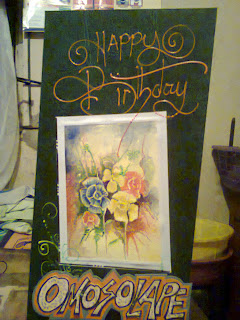we do all kinds of cards and art works.
Sounds mysterious and threatening, right? No worries! It's just that when Liz Haywood-Sullivan began to create pastel drawings, she was dismayed with the range of dark colors available. "Rich, dark pastels were hard to find," she says. "Most of the time the darks just weren't dark enough. Now, fortunately, times have changed and colorful, dark pastels are easier to come by."
But Haywood-Sullivan also uses two approaches for painting pastels that achieve powerful and intriguing dark effects--working on black paper and layering colors with alcohol washes. The result is that the dark areas in her pastel paintings command attention and enhance the glow of the highlights and give the paintings a solid, grounded appearance where the eye can rest. Here's a rundown of these two valuable pastel-painting techniques. |
 |
Fanfare by Liz Haywood-Sullivan, pastel painting, 24 x 24.
|
Pastel Painting Using Black Paper
Although Haywood-Sullivan never uses pure-black pastel, she does not shy away from using black paper for her ground. "This allows me to get more light into a work," she says. "If I took a light-yellow pastel and put it onto a white paper, the yellow and white would look very similar. I would therefore try to compensate and make the yellow stand out by using a more highly pigmented yellow. On black paper, however, the difference is clearer, and I end up using more color. Such a dark ground also keeps me honest as an artist: It's more challenging to work on, it's not as forgiving, and it won't take unlimited layers. I have to think and plan more in advance."
Alcohol Washes for Painting Pastels
Haywood-Sullivan takes an entirely different approach when creating darks on lighter papers. She begins with a white pastel paper. "I block in the darks very roughly and then take out a flat 3/4" brush and rubbing alcohol," she says. "This is where the fun begins. I start washing down the dark pastels with the alcohol, delineating major shapes, such as tree trunks. I find it very much like working in watercolor, except that the alcohol dries more quickly. As I work, I'm careful to preserve any areas of light paper I want to shine through."
 | | |
Roadtrip by Liz Haywood-Sullivan,
pastel painting, 36 x 24. Adapted from an article by Christopher Willard. | | |
After Haywood-Sullivan is satisfied with the appearance and placement of the darks in her pastel drawings, she lets the work dry fully. "This takes about 15 minutes," she explains. "At this point I can actually rub my hand over the whole paper, and the pastel won't rub off. The other nice thing about the alcohol method is that it restores the grit to the sanded paper."
Two exciting possibilities for pastel painting that can give you eye-catching passages in your work. For more pastel instruction and pastel lessons that are keyed in to allowing you to grow exponentially in your skills and methods, consider theArt of Richard McKinley Deluxe Collection with the resources and supplies you need to make considerable headway with your artwork. Enjoy!
|





Comments
Post a Comment